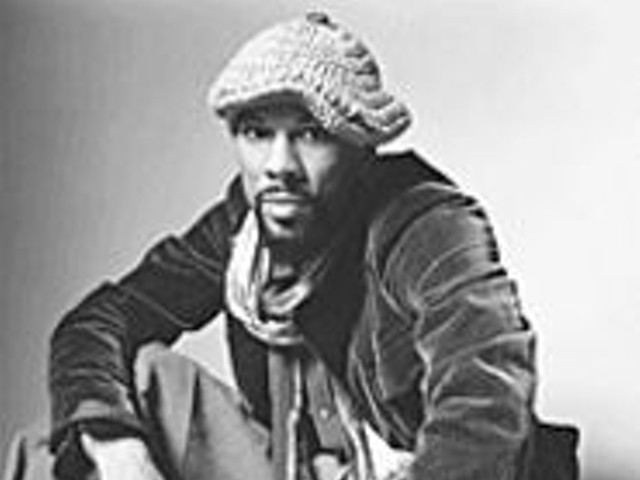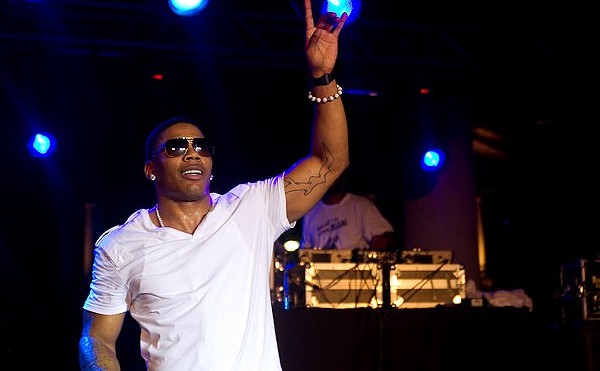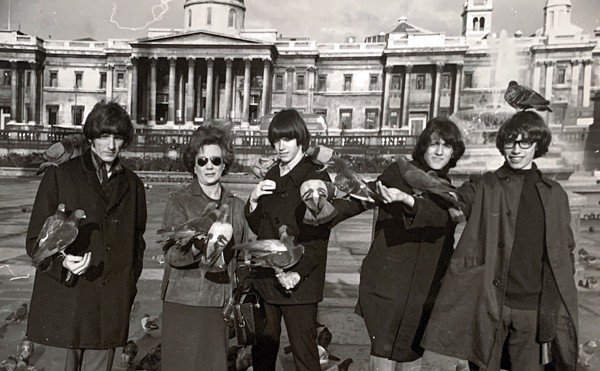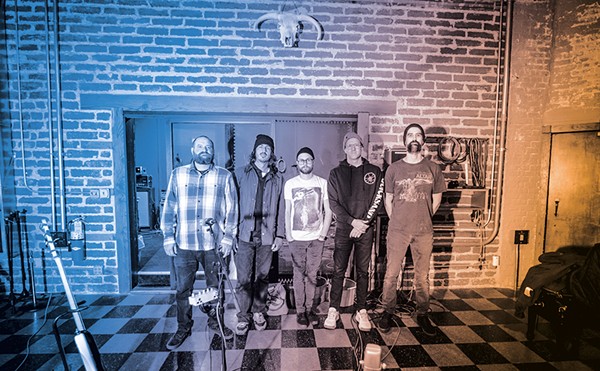He eventually connected with percussionist Michael Zerang, who hooked him up with gigs and introduced him to other local improvising musicians. A weekly residency at the Empty Bottle club -- still an ongoing proposition whenever Vandermark is not on tour -- was a turning point, helping him meet still more players and providing a regular forum for his musical ideas. "I can't even calculate what would have happened if we didn't have that gig," says Vandermark. Improvised music, he explains, is "a process -- there's no such thing as a 'best record' or a 'best gig.' The more often you can work, the more thoroughly developed your ideas will become. For me, living in Chicago accelerated the process. I got to play more times in a month in Chicago than I would have in a year in New York City."
Since then, Vandermark has become known for his many collaborations, among them the DKV Trio, an free-improv group with bassist Kent Kessler and percussionist Hamid Drake; Spaceways Incorporated, which explores the music of Sun Ra and George Clinton; and the Territory Band, a large ensemble financed with the proceeds of the "genius grant" he received in 1999 from the MacArthur Foundation. Vandermark also performs with many European players, cultivating relationships with Swedish musicians in the AALY Trio, English percussionist Paul Lytton and German saxophonist Peter Brötzmann.
For now, though, Vandermark is focused on the release of Airports for Light (the band's eighth album, give or take a couple of limited-edition CD-Rs) and the Vandermark 5 tour. As leader and composer of all the material, Vandermark handpicked the members from among his many collaborators. Trombonist Jeb Bishop is "one of the first people I thought of when putting the group together," he says. "His playing has just kept developing and growing."
Also sharing the front line is Dave Rempis, a traditionally trained musician who, in Vandermark's words, is "an amazing saxophone player from a technical standpoint -- I'd have to say he's better than me. The way he's going to approach that material is going to be radically different from the way I would. It's kind of like having someone like Johnny Hodges in the band to carry the melodic line. To have a foil like that is fantastic."
Drummer Tim Daisy is the newest member, joining in December 2001 at a time when the group was debating whether to continue after the departure of original drummer Tim Mulvenna. "Tim joining was actually a real shot in the arm," says Vandermark. "He's an amazingly disciplined and devoted musician. The way he approached the playing has really helped the group. He's got great energy, and he's open to different rhythmic concepts."
Rounding out the band is bassist Kessler, whom Vandermark describes as the most important collaborator he's had. "We've been playing together twice a week since 1992," he says. "I don't think anybody knows my playing better than him." Vandermark likens Kessler's role in the V5 to the way Charlie Haden followed and supported the soloists in Ornette Coleman's groundbreaking group. "The music we play isn't dealing with tonal harmony at all," he explains. "There are no fixed chord structures, so Kent has to deal with the different approaches of the horn players and make it all sound seamless."
Though improvisation is at the core of the V5's music, the compositions are carefully planned. "The material is a little too convoluted to just try running it in the studio," Vandermark says. "It's really important to get a chance to perform it before trying to record." As an example, he cites "Staircase" on Airports for Light. "There's a section in the center of the tune where I wanted Tim to play some irrational percussion sounds. To do that live a dozen times before we actually recorded gave him the ability to understand the part and know where to put that stuff."
In keeping with Vandermark's philosophy of recordings as documents, Airports for Light was committed to analog tape in just two days. "Some of my favorite jazz records are from the '50s and '60s," he says. "I see what this band does as being connected to that history, so why not work that way? Technically, digital recording is probably truer, more technically correct, but the ear doesn't really hear that way. Analog tape tends to warm the stuff up and make it easier to listen to."
First pressings of past V5 recordings have included bonus CDs with live versions of tunes written by such adventurous musicians as Coleman, Archie Shepp, Julius Hemphill and Anthony Braxton. With the new CD, the V5 offers early buyers another bonus disc, this time reinterpreting work from a musician usually identified with the jazz mainstream. "Sonny Rollins is incredibly overlooked as a member of the avant-garde," Vandermark says. "In the '50s and '60s, he was definitely as adventurous as Coltrane. If you really look at Rollins' work, he's as cutting-edge as anybody playing at that time. I thought, 'Why don't we reinvestigate this guy, take a look at these pieces that he wrote and see what they mean now?'"
Although Vandermark obviously knows and respects jazz history, he doesn't have much interest in musicians who simply recycle older styles. "I see things like the Lincoln Center jazz ensemble as being like the Dixieland revival of the '50s, going back and investigating music of the past. I kind of ignore that stuff, because I don't see that as connected to what jazz is supposed to be: playing the music of your time."
Eschewing the traditional circuit of jazz clubs and festivals, the V5 instead has found sympathetic ears among young listeners weaned on underground rock, free improvisation and electronic music. "There's a lot of cross-pollination going on in these scenes below the mass media radar," Vandermark notes. "When we go out on tour, a lot of the audience is in their twenties and thirties. I hear things like 'I hate jazz, but this stuff is really cool.' The perception they have is that jazz music is dead -- it's like going to a museum you don't want to go to. That perception is compounded by the way the media presents it.
"The Ken Burns series [of PBS documentaries] is a perfect example," he continues. "I can't imagine anybody who's not already interested in the music watching that and then wanting to go out and hear jazz."
Using a booking agency that usually works with rock bands, Vandermark is determined to take his music to venues frequented by open-minded younger listeners. The V5's current tour includes rock clubs and alternative performance spaces in Toronto; Montreal; Boston; New York; Philadelphia; Pittsburgh; Washington, D.C.; Chapel Hill, North Carolina; Atlanta; Lexington, Kentucky; and Indianapolis. (Alas, a tour-ending St. Louis show scheduled for the Way Out Club has been canceled because of "problems with the local promoter," in Vandermark's words.)
"Anybody who is actively curious about music can get to what I'm doing, because it's music that has something to say in a passionate way," Vandermark concludes. "They may not understand the history of it, but it speaks to them."





